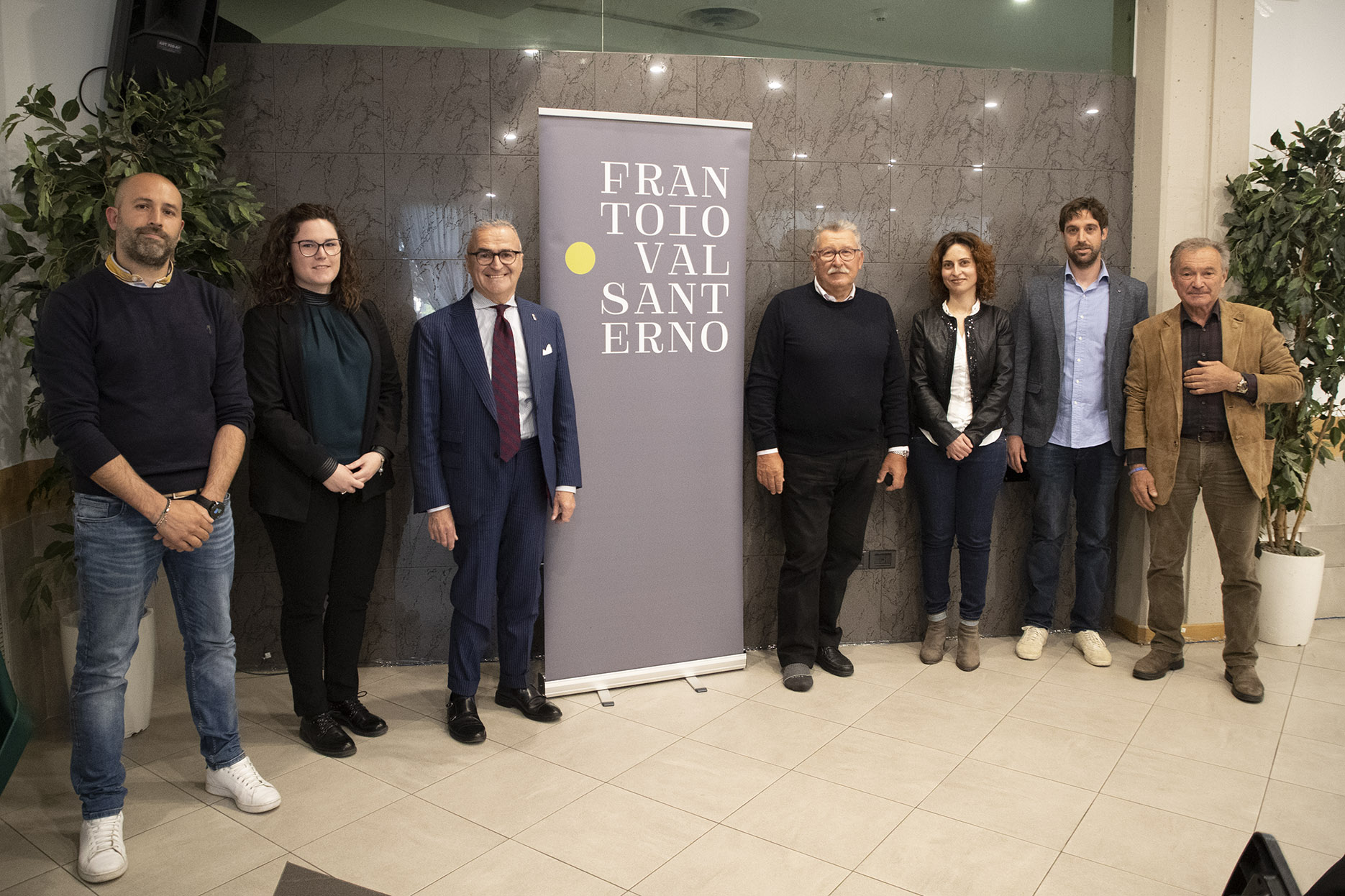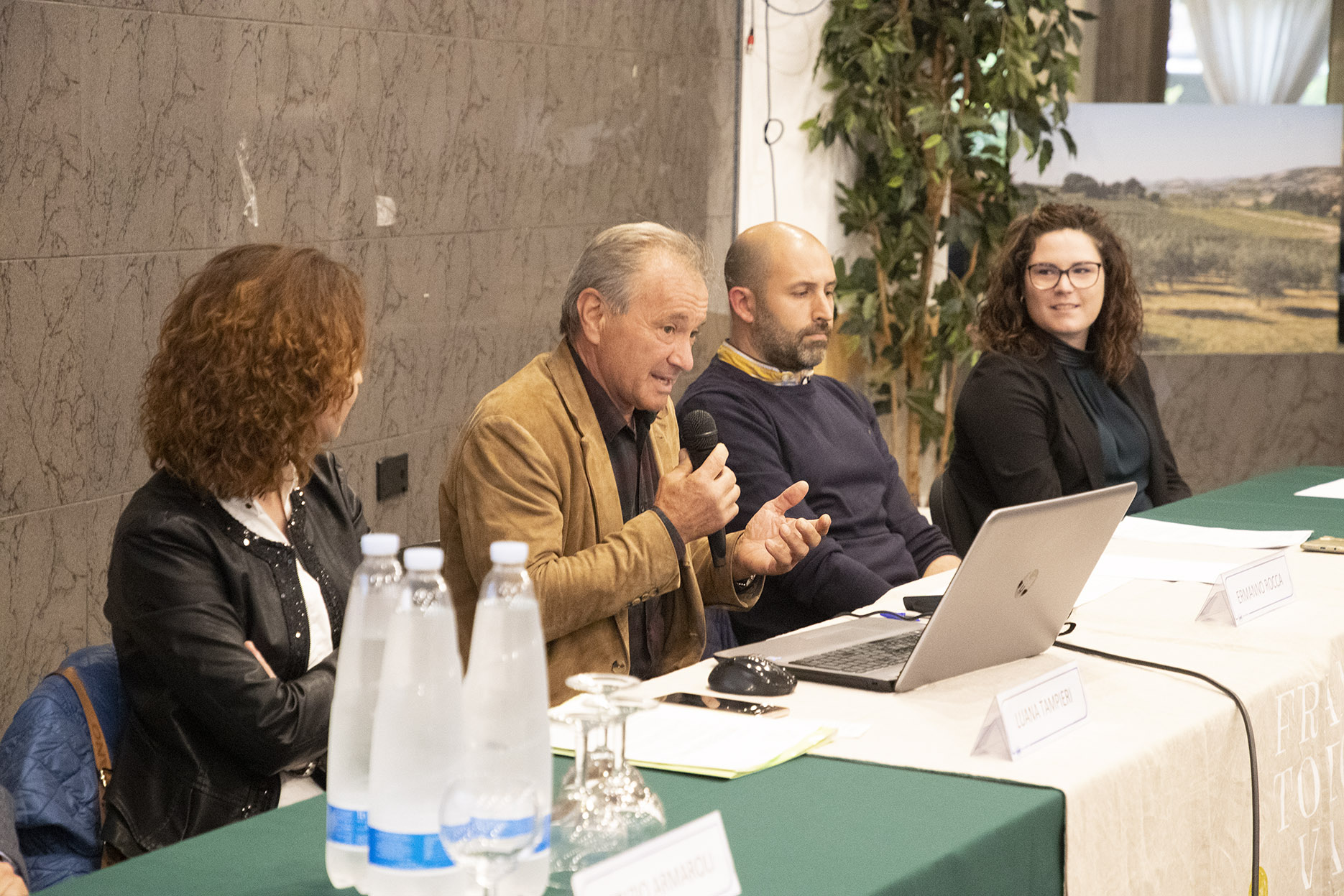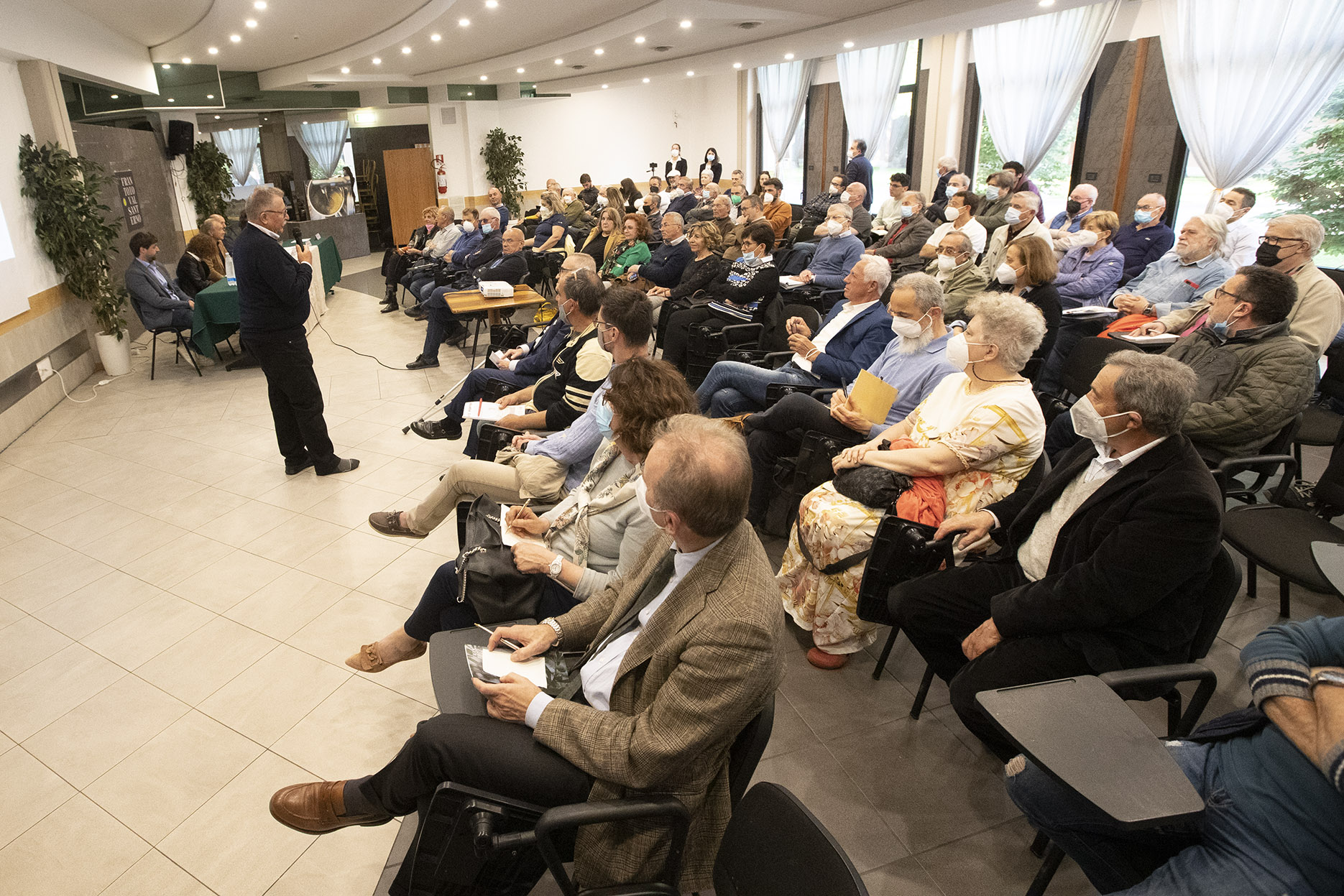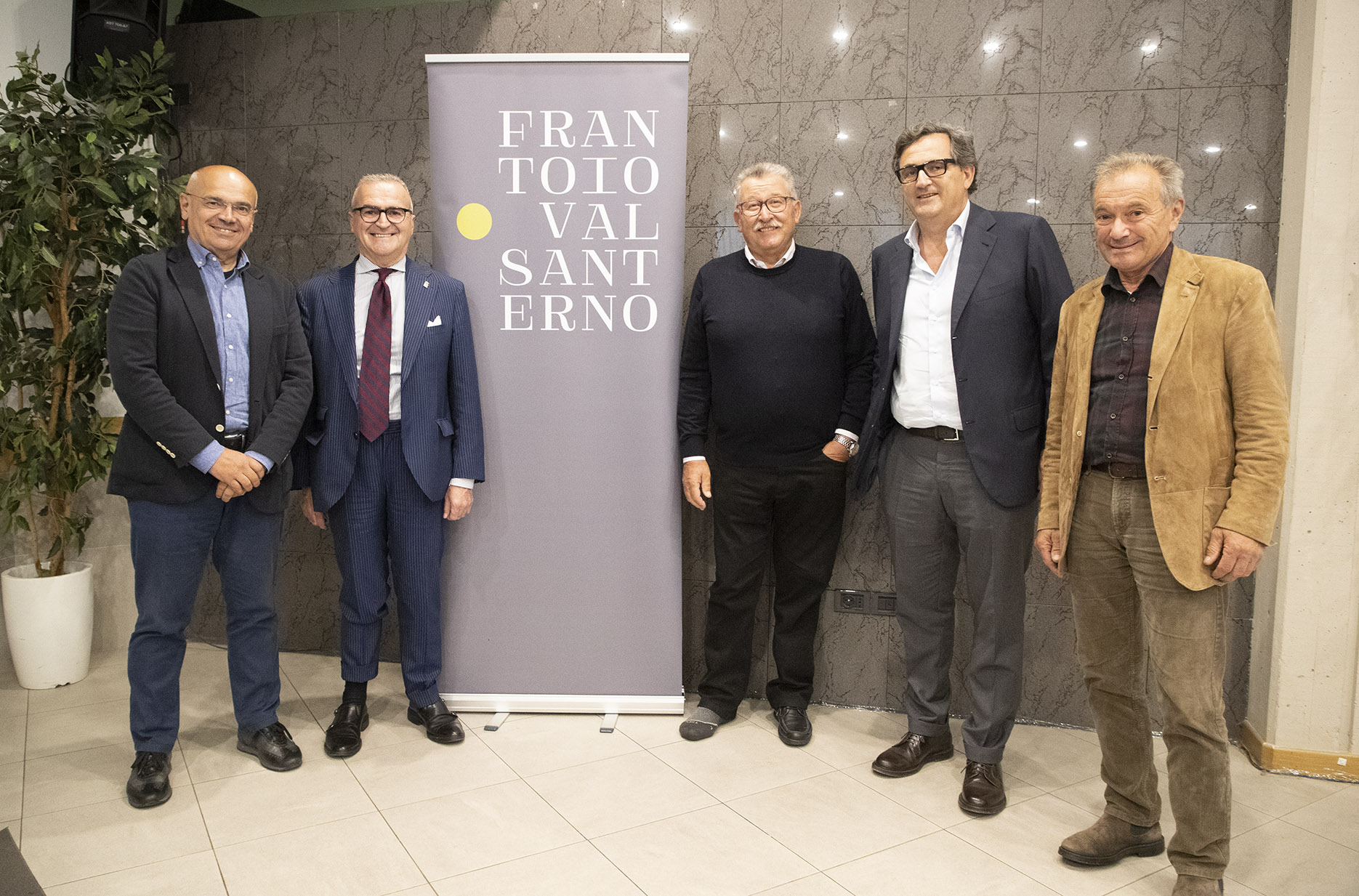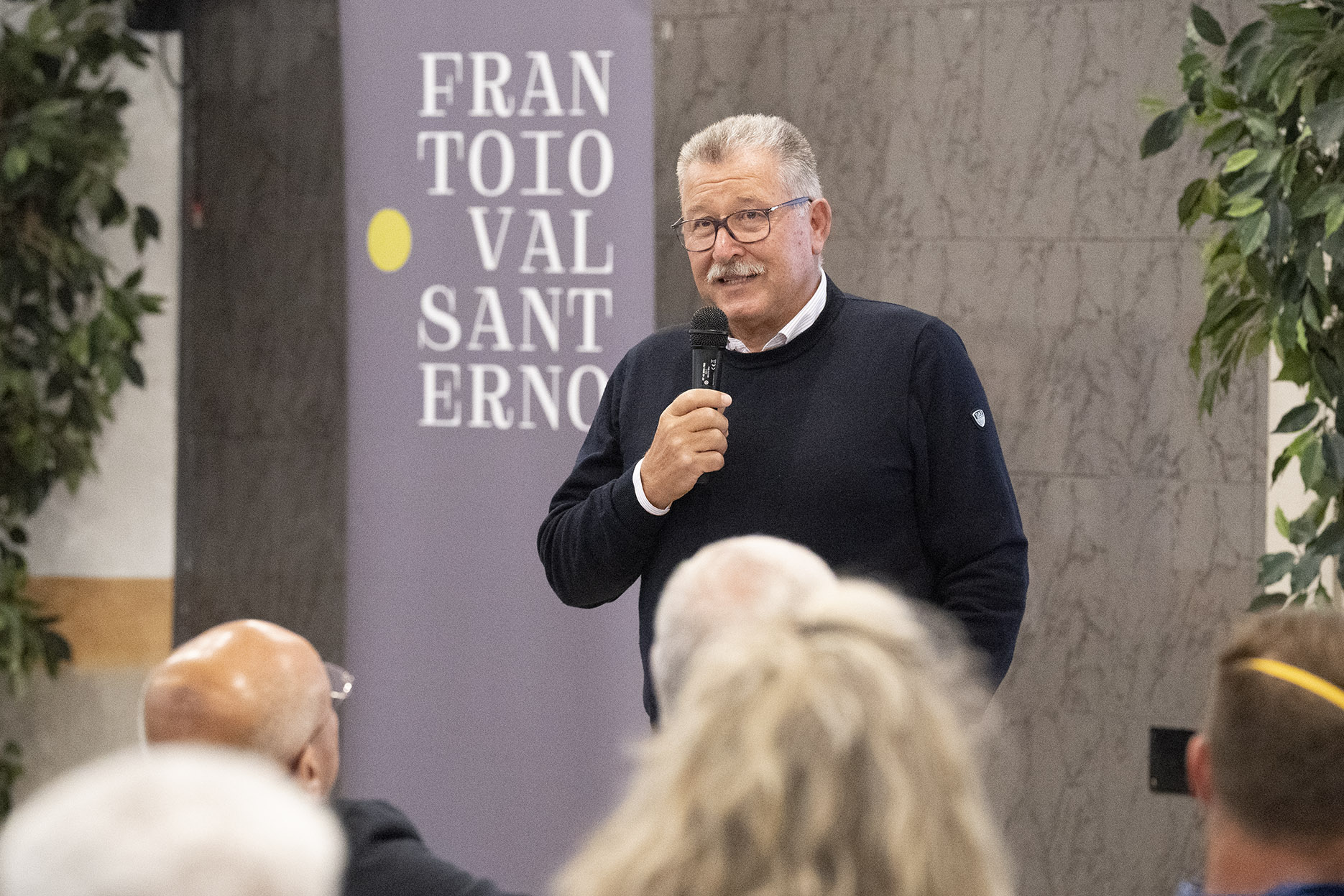The conference dedicated to “Olive growing: an income crop” was held yesterday on Monday 9 May at the Hotel Molino Rosso in Imola. The event was organized by Frantoio Valsanterno with the patronage of CIA Imola and the Regional Association of Olive Producers with the aim of presenting the potential and growth possibilities of olive growing in the Imola and Bologna area.
The conference was attended by Vanni Angeli, vice president Frantoio Valsanterno, Luana Tampieri, president of the CIA Agricoltori Italiani Imola, Ermanno Rocca, president of the Business Network for IGP Colli di Bologna, Patrizio Armaroli, agronomist, Alessandro Spada, director ARPO and Martina Spada, Frantoio Valsanterno Agricultural Expert.
In welcoming the participants Vanni Angeli underlined how “In the Imola area, fruit, in particular strawberries, peaches and apricots, as well as wine and therefore grapes have been the basis of the farmer: we believe that the olive tree can help to the diversification and income improvement of the agricultural entrepreneur, for this reason our ambition is to create in the Frantoio Valsanterno a reference center of the Imola and Bolognese territory to help the olive producers”.
Luana Tampieri, president of Cia-Agricoltori Italiani Imola, brought greetings from the association she has led since March and took stock of the Imola agricultural system in which olive production can “fit”. “In recent years – said Tampieri – the earning capacity of farms has progressively reduced because production has been decimated by increasingly extreme atmospheric phenomena, from late frosts to the almost total absence of rainfall, to pass to hailstorms and torrential rains. Phytopathologies and the inability of producers to counter them with an adequate defense for the lack of effective molecules and market dynamics that almost never reward producers along the supply chains also contributed. In this context, there is a strong need to diversify crop plans with “income” crops and olive growing can become one of the income and growth opportunities available to farmers. I am thinking, in particular, of the companies that already work with the Ho.re.ca channel, for which it would be a natural commercial outlet, but also of agritourisms and educational farms. In this case, olive growing would also have an environmental and landscape value and would become a full part of an Imola “skyline” that aims to give tourists the experience of beauty.”
Ermanno Rocca, president of the Business Network for IGP Colli di Bologna, then focused on the development of olive growing in the Imola and Bologna area over the last 15 years. “The olive tree is a returning crop in our area, – said Rocca – it was abandoned a century ago and for 15-20 years now we have witnessed a gradual recovery. There is ample room for growth but a collaborative sensitivity and synergy between the various entities that make up the supply chain are needed. Of vital importance is the increase in the area of olive cultivation in our territory, the greater the number of olive crops, the greater the weight that our territory will have in the national olive growing scene. It is necessary to achieve a recognizability of the area. This is a fundamental step to give greater value to our olive growing. Another fundamental step will be the achievement of the IGP, which the network of companies that I preside over is working on. A certification such as the IGP increases the value of the land and the oil produced. Thanks to these dissemination and development activities, there will be an improvement in the quality, value and economic results of companies.”
The agronomist of Frantoio Valsanterno, Patrizio Armaroli, illustrated the types of plants, traditional and super intensive, on which olive growers can orient themselves, focusing in particular on the economic aspects such as plant costs, management costs, life time and production waiting by type. “I wanted to give an overview of the aspects that affect the profitability of olive cultivation, illustrating in particular the evolution that olive growing has had in the last 10 years, passing from an” extensive “to” intensive ” cultivation, thus managing to reduce the investment payback times in a few years, like any other tree culture” declared Armaroli.
Alessandro Spada, director of ARPO, focused on economic contributions to support the development and renewal of the olive sector. These are his words: “After a long time asking for specific interventions in support of the olive production chain, finally there was a first step with the allocation of important resources: 30 million euros have been allocated for the construction of new plants and the modernization of existing ones. A first recognition by the Ministry of the importance of olive growing which gives us hope for the development of this crop”.
Finally Martina Spada, agricultural expert of Frantoio Valsanterno, concludes the meeting by recalling that “Olive growing is no longer an ancient profession. Today we are at a turning point, the future is innovation and collaboration. Frantoio Valsanterno wants to make this future a present. This is why we want to support the olive grower in the various aspects of his work, from the field, to obtain a good harvest, both in terms of quality and quantity, to the finished product, even to the paperwork. For this Frantoio Valsanterno proposes itself as an olive growing chain for the territory.”
